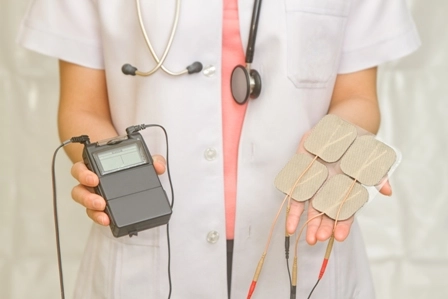Revisions, Deletions Highlight Relevant Code Changes

CPT® specifies TENS neurostimulator in 64550. Neurology and pain management coders will have relatively few changes to fret about in next year's edition of the CPT® manual - but that doesn't mean you shouldn't pay attention to the 2018 edition of the book. The lowdown: Revisions rule the day, for a pair of specialty-specific codes and the general set of observation evaluation and management (E/M) codes. Check out this quick look at the changes you'll need to note before you start coding with CPT® 2018 on January 1. TENS, VEP Codes Get Specific The first revision to be aware of is a modified description of the code for the application of a transcutaneous neurostimulator. To clear any confusion on which types of nerve stimulation equipment this code entails, CPT® provides an example in 64550 - transcutaneous electrical nerve stimulation, or TENS (Material new for 2018 in bold). In the interest of clarity, CPT® has revised its visual evoked potential (VEP) code to further specify its code description. In 2017, this was the descriptor for 95930: Visual evoked potential (VEP) testing central nervous system, checkerboard or flash. In 2018, 95930 will read (New/revised material in bold): Visual evoked potential (VEP) checkerboard or flash testing central nervous system except glaucoma, with interpretation and report Essentially, the significant changes to be aware of with this revision are the inclusions of "except glaucoma" and "with interpretation and report." Now, when applying code 95930 there will be no question as to whether the coder should include a separate interpretation and report code. Testing procedures typically include interpretation and creation of a report summarizing the test and findings. The clinical diagnosis of glaucoma is now specifically excluded from the CPT® descriptor, as this procedure is not applicable to those with this condition. 2018 Ends Neurostimulator, nTMS Codes You should also be aware of these two important CPT® deletions, which take effect in January: Best bet: There are no 2018 CPT® codes that exactly match the descriptors for 64565 and 0310T; if your provider performs one of these procedures, contact a rep or ask a provider what code you should submit instead. Stay on Top of these E/M Revisions Finally, beginning in January, you will find a subtle but important revision to some observation care E/M codes; these changes will affect the following codes: The changes: The inclusion of the term "outpatient hospital" to describe the patient's observation status. For example, a portion of the description for code 99217 will change to "this code is to be utilized to report all services provided to a patient on discharge fromoutpatient hospital'observation status' if the discharge is on other than the initial date of 'observation status.'" There are also similar changes to 99218-99220 to indicate that the patient you are coding for has outpatient status. "These changes appear to be clearing up the confusion that often arises with observation patient status," says Barbara J. Cobuzzi, MBA, CPC, CENTC, COC, CPC-P, CPC-I, CPCO, AAPC Fellow, vice president at Stark Coding & Consulting LLC, in Shrewsbury, New Jersey. "Essentially, CPT® is clarifying that patients that are in observation are always in an outpatient status," Cobuzzi explains.




